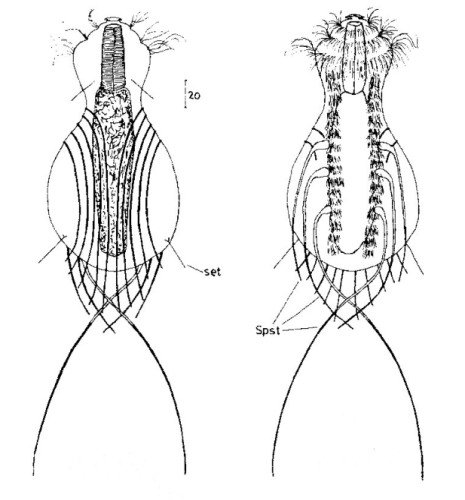Haltidytes

- Body short, bottle-shaped
- Cephalion present
- behind setola on papillae
- 1-3 pairs of ventrolaterally antspringing, strong spur spines
- posterior spines protrude the trunk by up to one body length
- further dorsal jumping spines
- no secondary spines
- ventral cilia in rows, no tufts
- jumping movements for escape possible due to jumping spines
6 Species:

Haltidytes crassus
200 µm - 209 µmDorsal scales: No scales; 5 pairs of non-crossing elastic spines projecting above the body; two spines each starting ventrally
Ventral scales: no scales; 3 pairs of long jump spines (100 - 240 mm); posterior ones overhang the body by one body length and cross each other
Particularities: Setae stand on clear papillae

Haltidytes festinans
120 µm - 122 µmDorsal scales: no scales; dorsolaterally 3 groups each of 3 + 2 + 2 jump spines, which protrude even in resting position and slightly overhang the body
Ventral scales: no scales; a pair of long jumping spines (140-144 µm), surpassing the body by 3/4 of its length and crossing each other

Haltidytes ooeides

Haltidytes pseudosquamosus

Haltidytes saltitans
83 µm - 85 µmDorsal scales: no scales; two long, straight caudal spines (70-75 µm); 4 pairs of dorsolateral crossing spines
Ventral scales: no scales; one pair of long, crossing hock spines (80-82 µm)
Particularities: inadequately described
